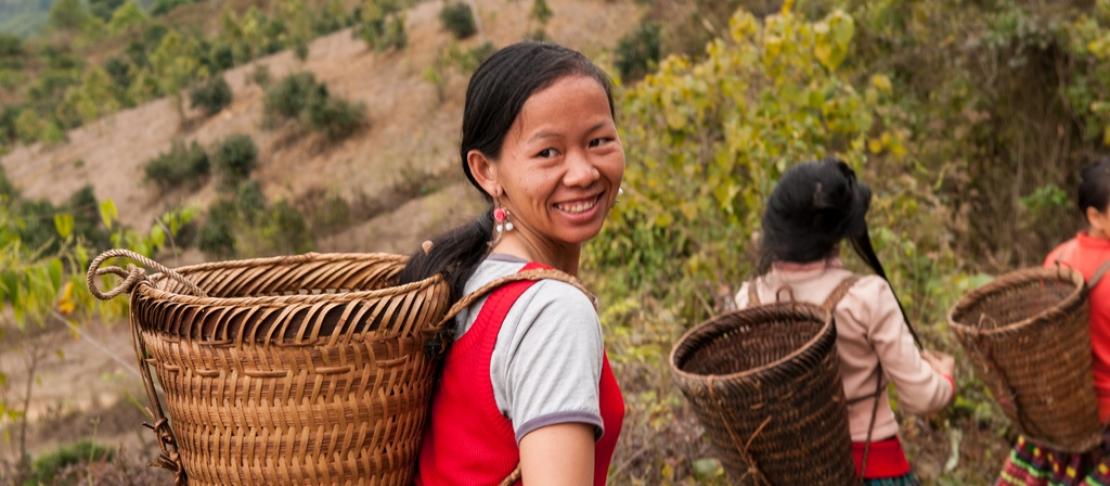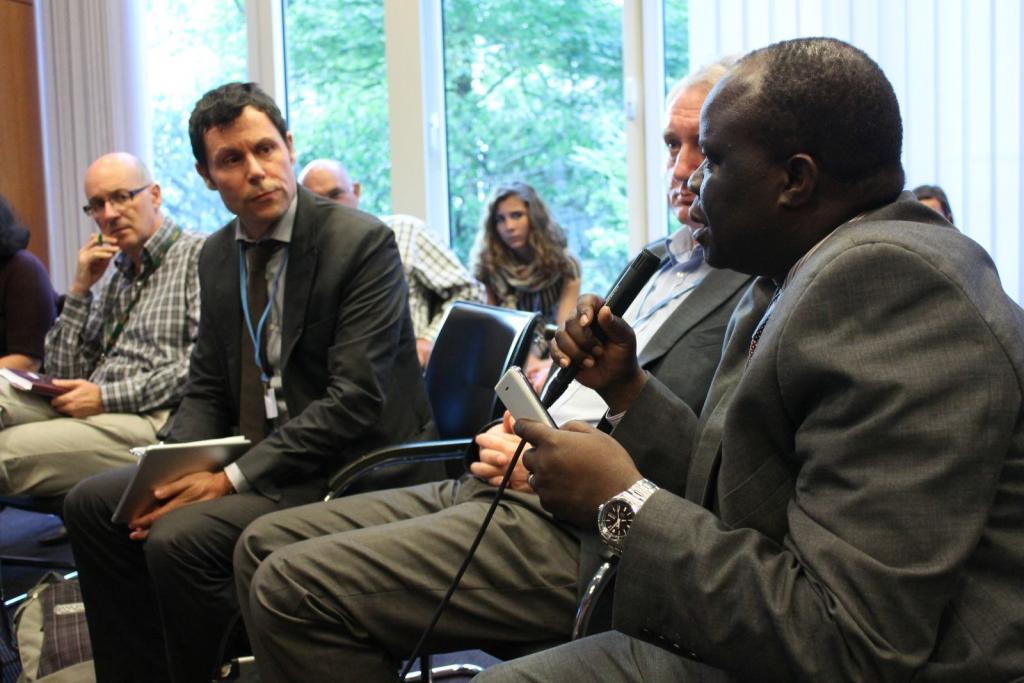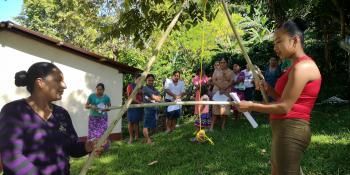Climate-smart agriculture – from the meeting room to grandma’s farm

Climate-smart Agriculture is not a blanket solution to climate change, but a tool-set for countries to promote adaptation and to create resilience and food security in planning processes.
Agriculture has not been on the top of the agenda in the United Nations Framework Convention on Climate Change (UNFCCC) processes. In fact, agriculture, climate-smart agriculture and agricultural development, have occupied very little space in the negotiations. This also goes for meetings such as the Sessions of the Subsidiary Bodies (SB40), taking place in Bonn, Germany at the moment.
On Thursday 5 June in the first week of the meetings, the Food and Agriculture Organization of the UN (FAO) hosted two side events in partnership with the World Food Program (WFP) and the International Fund for Agricultural Development (IFAD) – one on National Adaptation Plans (NAPs) and agriculture and one on Climate-Smart Agriculture (CSA). The events both focused on ways to address adaptation to climate change, for example through climate-smart agriculture.
One size does not fit all
At the side event ‘Climate-Smart Agriculture at Work’, a panel consisting of representatives from FAO, World Food Programme (WFP) and Ireland fielded a wide range of questions about CSA from the audience.
Richard Muyungi, former SBSTA chair from Tanzania, posed one of the first questions. He asked how the concept of CSA goes from the meeting rooms out to the farm – out to his grandmother, who still works as a small-scale farmer?
Here, it was underlined that CSA must always be tailored to the context – it is not a predetermined set of solutions and there is no ‘one-size-fits-all’, when it comes to the process of implementing.
CSA is also about using the measures already at hand. Many small-scale farmers already implement measures that can be deemed climate-smart to adapt to climate change. And many projects are already helping farmers become more productive and resilient. Getting CSA out to more farms is about joining forces and bringing projects together in partnerships, as noted by Kathryn Milliken from WFP. But always adapted to the local conditions and tools already at hand.

Richard Muyungi, former SBSTA chair, asked how the concept of csa can move from the meeting room out to his grandmother's farm. Photo: Pernille Høj (CCAFS)
Mitigation or adaptation?
Another question explored the role of mitigation vs. adaptation in Climate-Smart Agriculture - Is the entry point for CSA to farm in a way that fosters mitigation, or is about adaptation to climate change?
As Wendy Mann, Senior Policy Advisor on agriculture and climate change for FAO, explained, the entry point for the CSA has been food security and to keep up productivity for small-scale farmers, and therefore adaptation is one of the main goals. But, as it was noted both by FAO and Kathryn Milliken, mitigation can often emerge as a co-benefit of adaptation approaches.
In the side event on adaptation planning and NAPs earlier the same day, the question of mitigation of climate change also came up. Mitigation and adaptation are often seen as two different and separate approaches to climate change, engaging different mechanisms. Where adaptation deals with impacts of climate change, mitigation deals with emissions – e.g. from agricultural production. This has also been the case in the context of UNFCCC, where NAPs and the so-called Nationally Appropriate Mitigation Actions (NAMAs) have been conceived at the same meeting, at COP16 in Cancun, Mexico, in 2010, but always have been separated in the processes and therefore also in national planning.
Separating mitigation and adaptation may not be the best way forward to secure food and nutrition in a sustainable way, Wendy Mann underlined at the CSA side event. And, as Jan Verhagen, member of the Least Developed Countries (LDC) Expert Group (LEG), explained in his presentation at the NAPs side event, the first and foremost goal of NAPs is securing food and nutrition in an unsecure future with a changing climate. But, as one audience member asked, is CSA then the answer to interlinking adaptation and mitigation?
One answer could be to have CSA as part of NAP processes, and thus getting climate change together with agriculture into NAPs. This would also integrate different national development plans and maybe mean more funding to NAPs.
One example of a process, where adaptation and mitigation is brought together, is FAO’s Economics and Policy Innovations for Climate-Smart Agriculture (EPIC) programme. The programme supports CSA-projects in Malawi, Vietnam and Zambia, where scenarios workshops have been carried out in collaboration with CCAFS. The projects, which are in the start-up phase, aim to secure the necessary policy, technical and financial conditions that enable the countries to sustainably increase agricultural productivity, build resilience and build the capacity of agricultural systems to adapt to climate change and reduce geenhouse gas emissions.
Video: FAO’s Senior Policy Advisor on agriculture and climate change, Wendy Mann, explains about the links between CSA and adaption and mitigation, the FAO EPIC CSA-projects and also the role of agriculture and CSA in the UNFCCC process:
Read more:
Can countries embed climate adaptation in their development plans?
Read FAO's new publication Success Stories on Climate-Smart Agriculture
Join the discussion:
CCAFS will be hosting two side events during the UNFCCC Climate Change Conference in Bonn, 4-15 June 2014 (SBSTA40)
Planning climate adaptation in agriculture: Advances in research, policy and finance- Saturday, June 7, 2014 - 18:30 to 20:00
Advancing Climate-Smart Agriculture in Africa- Sunday, June 8, 2014 - 13:15 to 14:45
Follow updates from SBSTA on our blog and via @cgiarclimate on twitter.
Pernille Høj works as a Communications Assistant at the CCAFS Coordinating Unit.



